We arrived in Cairns, Australia at six o’clock in the morning on the 1st of January 2018. We had a hostel booked for a week, and no further plans.
For the first time during our trip (and maybe even for the first time in our lives), we had no idea where we would be the following week, the following month or the following year. 2018 stretched out before us a blank canvas of possibility. While some might see this as freeing and exciting, as someone who likes to have a plan at all times, I found it uncomfortable and challenging. I quickly set to work trying to fill in the blanks, apply for a job and set us up for a temporary life in Australia.
While the sun shone over beautiful Cairns and the wonders of the Great Barrier Reef beckoned a few miles from the shore, I barely left our hostel. A new phone was purchased to replace the one that had been stolen in Bali. Sim cards were ordered, tax file numbers were applied for, bank accounts were opened and CVs were updated. But as I tried to distract myself from the endless chasm of time that stretched ahead, our vision of living and working by the beach while simultaneously saving up to continue travelling started to crumble bit by bit.
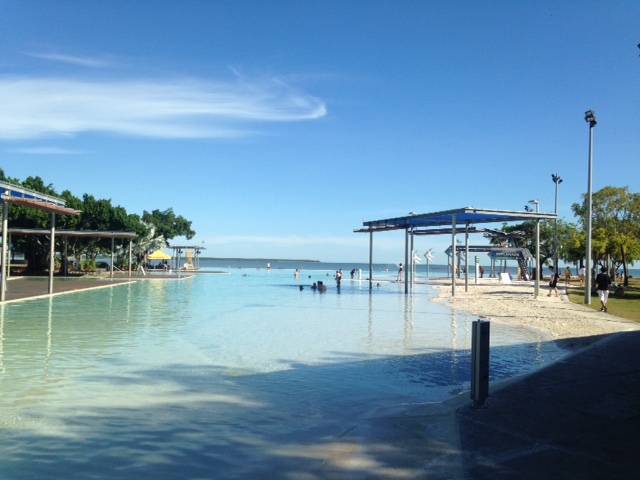
Beautiful Cairns
—
First, it became clear that Shane wouldn’t be able to get a job.
Young people aged 18-30 are able to apply for a “working holiday” visa to work and travel in Australia for up to a year. The visa comes with certain restrictions:
- you can’t work for one specific employer for any longer than six months
- you have to pay more tax than ordinary Australian residents
- if you want to stay for a second year, you have to complete three months of “specified” work, which usually means working in a rural area doing a job that Australian residents don’t want to do (such as fruit picking or farm work).
While I was able to successfully apply for a working holiday visa, Shane has now reached the grand old age of 34, and so was too ancient to be in with a chance. Over a year ago, the Australian government announced plans to change the age limit to 35, but as of the 1st of January 2018, this still hadn’t happened, and it is still unclear when or if it ever will.
There are other ways to work in Australia as an old person, but unless you are a doctor or are blessed with Australian citizenship, most of them involve spending a great deal of time and money going through a long and laborious immigration process – something we weren’t particularly keen to pursue unless we were sure we wanted to commit at least semi-permanently to a life down under. The only other option was for Shane to obtain an employer-sponsored visa, but after some extensive searching and enquiries, it became clear that this was a dead end. The Australian government has announced plans to review the employer sponsored visa programme to try to reduce the number of migrants like us coming to live and work here, which has put employers off recruiting people like Shane.
If we were going to live and work in Australia, I was going to have to pay the bills.
—
I stepped up the job search and we relocated to Brisbane – a bigger city, with what I hoped would be better job prospects than small but perfectly formed Cairns. We spent a day wandering around the city and then moved to the suburbs.
The cost of living in Australia came as a shock after six months in Asia. While a private room with a pool and ensuite bathroom a few minutes’ walk from the beach had set us back £10 a night in Thailand, we were lucky to find two beds in a dorm room for £30 in Australia. Food wasn’t much better. We tried to make use of the kitchen facilities in hostels and cook cheap food to save money, but I nearly fell over when I saw the price of vegetables. It wasn’t long until we were hooked on an unhealthy diet of Hungry Jacks burgers (which we discovered you can get for free if you fill in surveys online), and 50-cent ice creams.
While looking for work, we didn’t want to burn through our savings unnecessarily, so Shane signed us up to a website called “workaway”. The workaway website connects people who are willing to work for a few hours a day in exchange for food and accommodation with hosts who are looking for volunteers to help with a range of tasks. We trawled through the website looking at adverts from smiling people in the Brisbane area who were willing to offer us a bed and some food.
Most people were looking for help with childcare, either in a full-time nanny capacity or as an add-on to other tasks. I swiftly ruled those out, which left us with a few interesting options. We were tempted to live on a banana eco farm with two twenty-something year old women who were looking for “freedom seekers who like getting naked in nature”, but were put off by their strict vegan diet and the lack of any nearby supermarkets to purchase an occasional non-vegan fix. Then there was the couple who wanted to create a team of workaway-ers to help create an eco-community, which sounded interesting, until the warning mid-way through their advert that “we do not eat at McDonald’s or drink coca cola. If you do then this isn’t the place for you”. Message received, advert closed.
The best option was clearly to live with an older couple called Bob and Karen, who wanted some help with their garden. In exchange for three hours of gardening for five days per week, they would feed us and give us a place to sleep. Shane wrote to them, and before we knew it we moved into our very own caravan outside Karen and Bob’s house in Redbank Plains, South Queensland.
—
On our first morning, we left the caravan at 5am to start gardening. We started as early as we could to escape the hottest temperatures of the Queensland summer, which frequently reached the heady heights of 38 degrees. As we started to gather up our tools and check out the garden, Bob warned us to be careful of snakes. Shane and I looked at each other, a little wary. “Are the snakes here… poisonous?” I asked, unsure of whether I really wanted to hear the answer. “Oh, yes!” Bob replied. Great.
We stayed with Bob and Karen for two weeks, and began to settle into a routine. Every morning we would start gardening between 5 and 6am, which involved pulling weeds, trimming hedges, spreading woodchip and spotting interesting wildlife (ants, spiders, and legless lizards). By 9am we were usually finished, so we would shower (it was already 30+ degrees by this time), and sweat it out in our caravan. I would apply for jobs, and Shane would watch youtube videos. By around 3pm we were usually hot, bothered and bored, so we would venture out for a little walk under the sweltering sun to the local shopping centre to bask in air conditioned bliss, and then have dinner with Karen and Bob before starting again the next day.
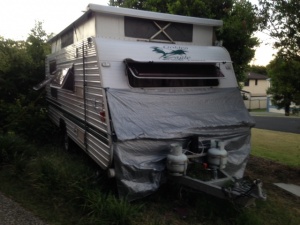
Our home at Bob and Karen’s
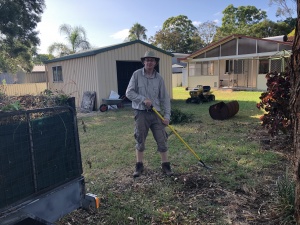
Shane and his rake
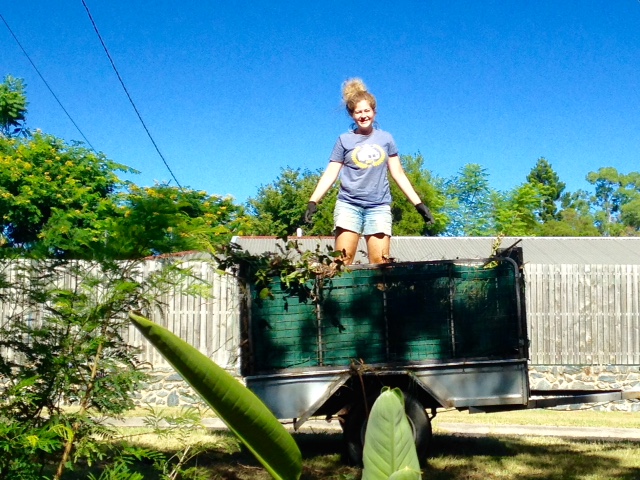
Squishing down the weeds
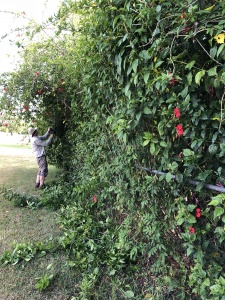
Shane cutting the hedge
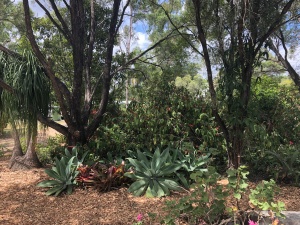
Two weeks later…
The days were broken up by some by some trips out and about with Karen and Bob – they took us for doughnuts one morning after gardening, and another day we went swimming with them at the local free lagoon. In what is becoming a common (and very welcome) theme, we also met up with some friends from our previous travelling adventures: Anni and Shane, who live in nearby Springfield (now with two children: Matthew and Evie), and Amy and Jasper, wholive in the Netherlands but are living and working on the gold coast for eighteen months (also now with two children: Melanie and Nikki).
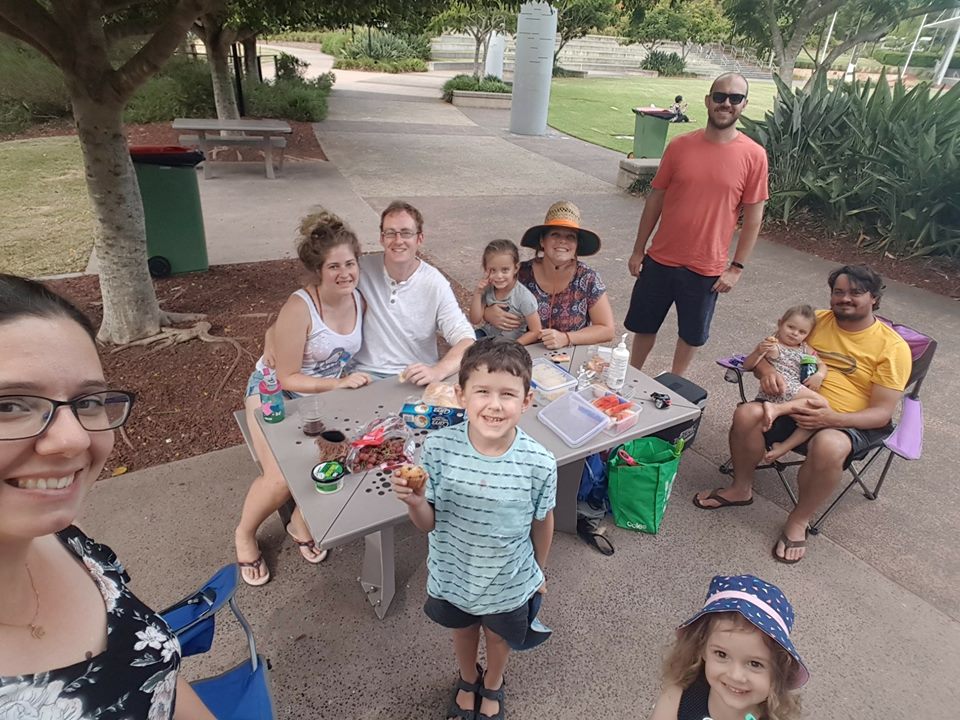
Meeting Anni, Shane, Matthew, Evie, Amy, Jasper, Melanie and Nikki
While it was great to see our friends, to have a routine and to be looked after by Bob and Karen for a while, our long-term plan wasn’t progressing so well. I was finding it hard to identify jobs that met my visa criteria, paid well enough to support Shane and I (as well as to save for future travel), and that were interesting and in some way relevant for my ideal future career in Public Health. When I did find a job that fulfilled these strict criteria, I would spend hours filling in applications only to hear (at best) silence, and (at worst) rejection. At the same time, Shane had watched the entire latest series of Peaky Blinders and was already bored. Several months of continued boredom for Shane while I slaved a way at a job I didn’t like that probably wouldn’t paid the bills didn’t seem like a good way to spend the next six or more months. We agonized over what to do: stay and try to make it work? Or cut our losses and continue travelling?
We checked our bank accounts and our air miles accounts, and looked at a map of the world. We worked out how much time we had until we needed to be back in the United Kingdom before our friends Hannah and Stefan get married in October. We researched flights, cruises, overland trips and campervan rentals. When it came down to seven months of work for me (and seven months of boredom for Shane) in beautiful but expensive Australia, or seven months of travel around Australia, New Zealand, the South Pacific and South America, everything started to become clear.
We began our plan B by renting a car, and driving from Brisbane to Melbourne.